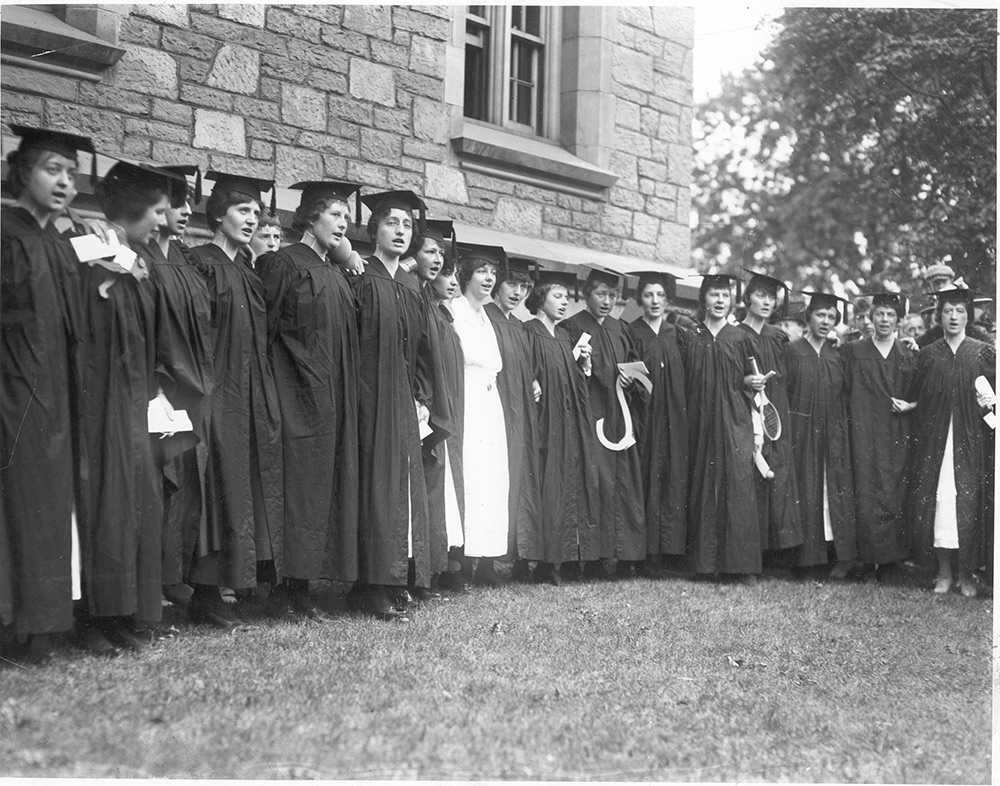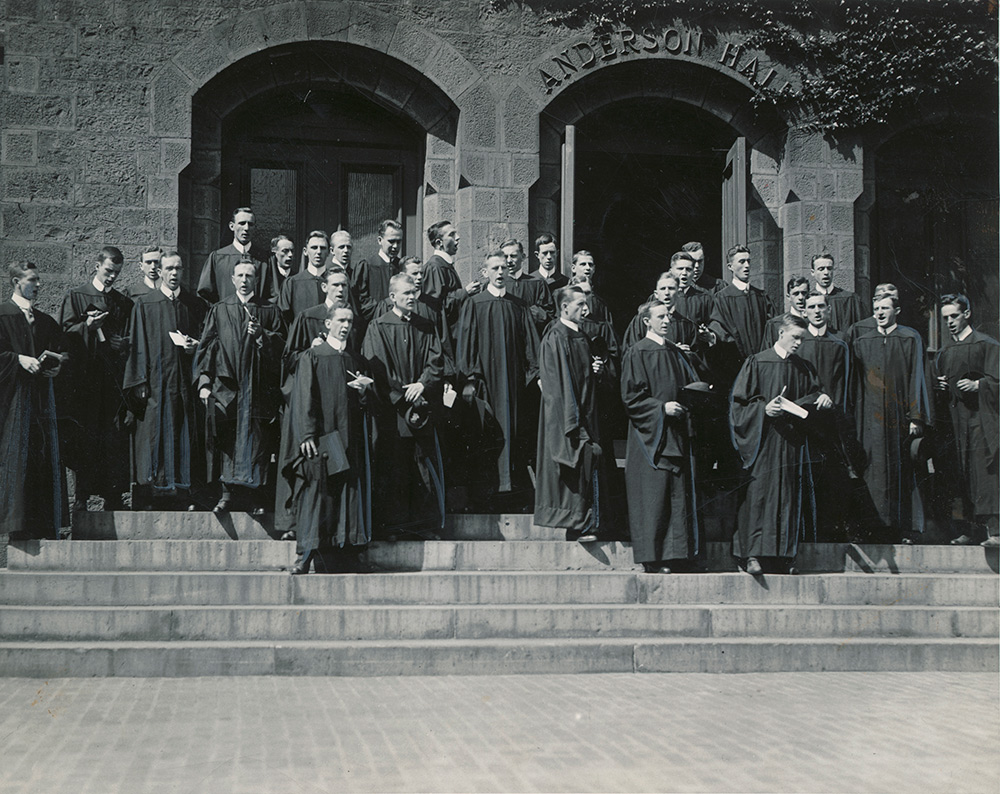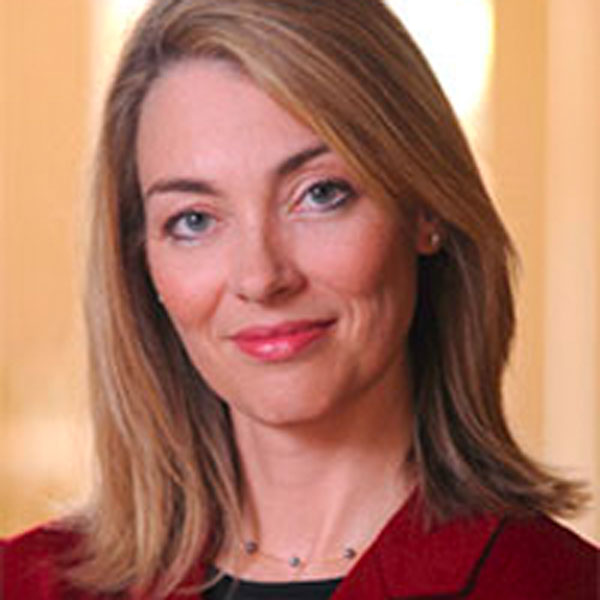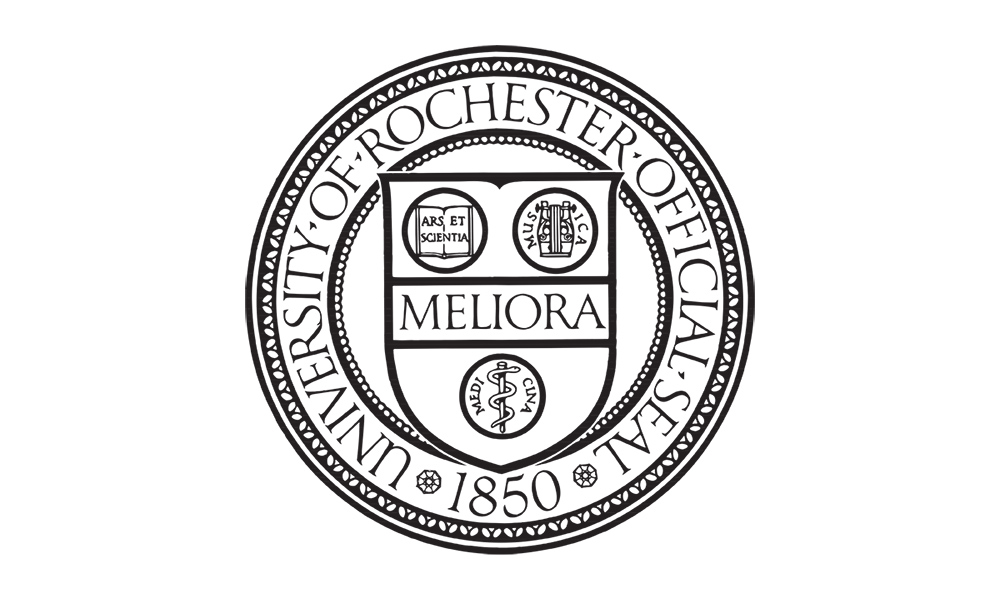Think you know pretty much everything about this campus and its traditions? Are you ready to challenge your Rochester Commencement IQ?
Join “tradition guru” Melissa Mead, aka the John M. and Barbara Keil University Archivist and Rochester Collections Librarian, on a little tour of some of our quirky graduation traditions—then and now. And hear from Liz Beson ’17, who graduates with a degree in American Sign Language, linguistics, and international relations, on both the happy and the sad of her upcoming commencement ceremony.
[Listen to a QuadCast feature about commencement traditions]
Co-Education, 1900-style: Two genders, and a place for each
The University’s graduation ceremony has changed drastically over its history. An all-male institution for the first 50 years, the University officially enrolled its first class of 33 women in 1900. But unlike today’s processional—grouped by college and school—the processional back then was strictly along gender lines. The women sat separately in Chapel. While there was one commencement ceremony for all, the commencement programs had two distinct lists of graduates: one of men and another of women. Simply put, no mingling of the sexes.
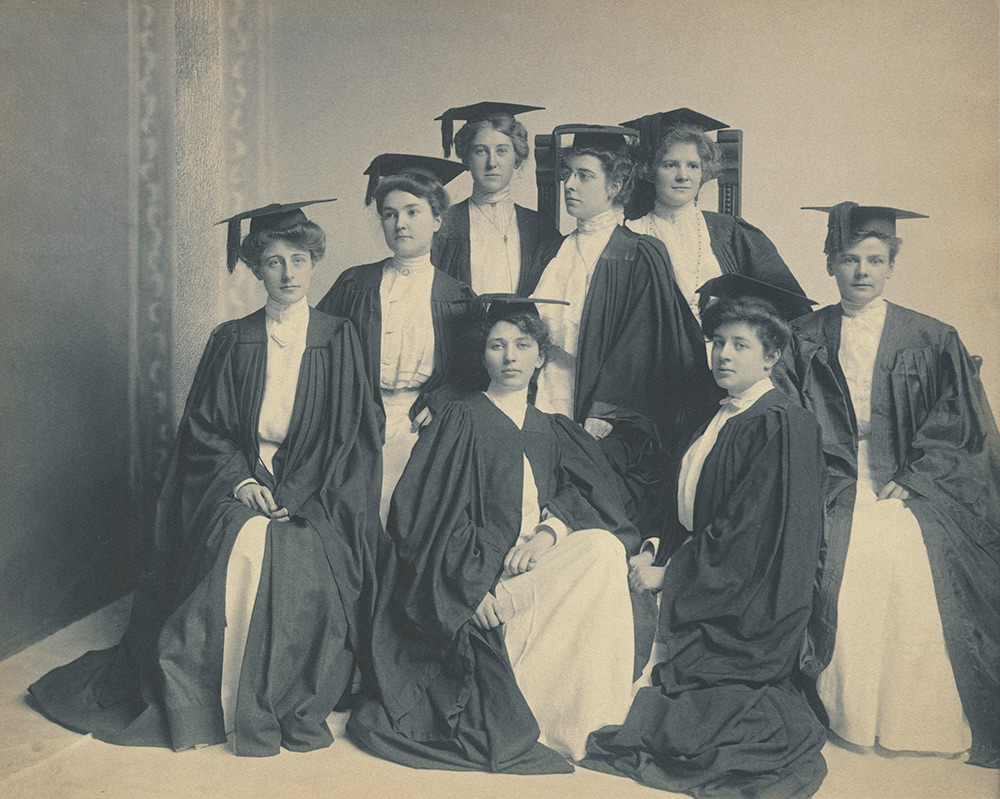
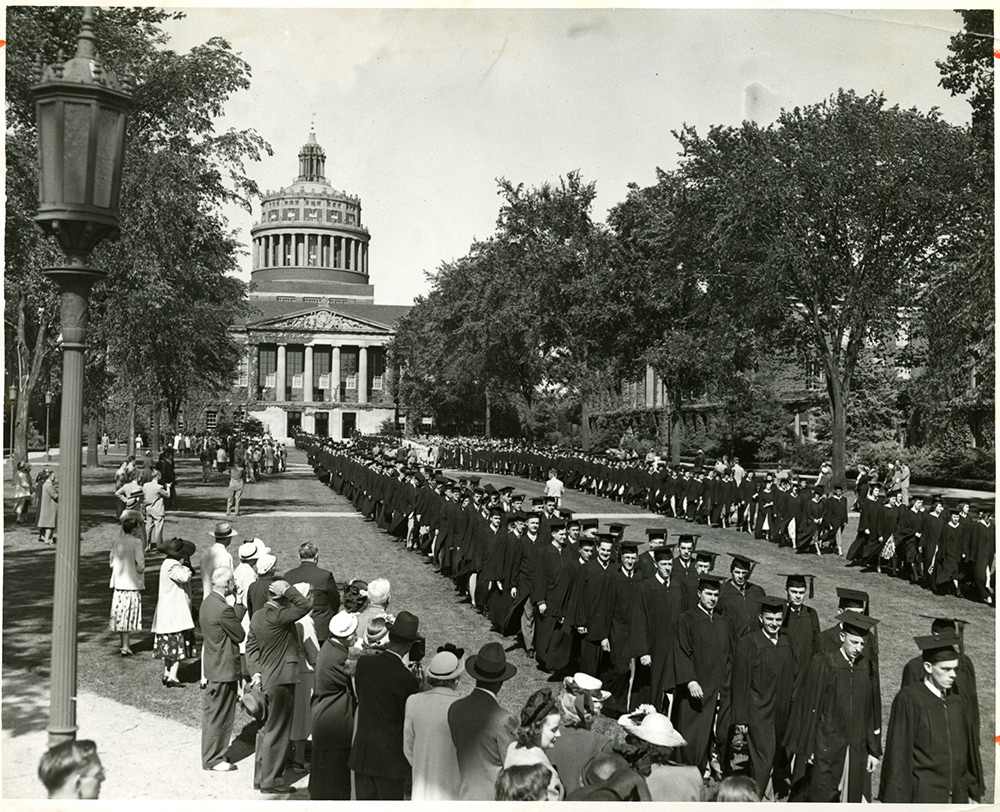
Exams are over, now where’s your speech?
In the University’s earliest years, graduation was a sitzfleisch contest for the audience: every single graduate gave a speech, competing for the Davis medal, which was introduced in 1864. This oratory competition at graduation continued into the early 1900s.
“We have the reminiscence of one man who graduated in 1873 and he remembered that there were actually two sessions of commencement. There was the morning and the afternoon session, to get through all the speeches,” says Mead.
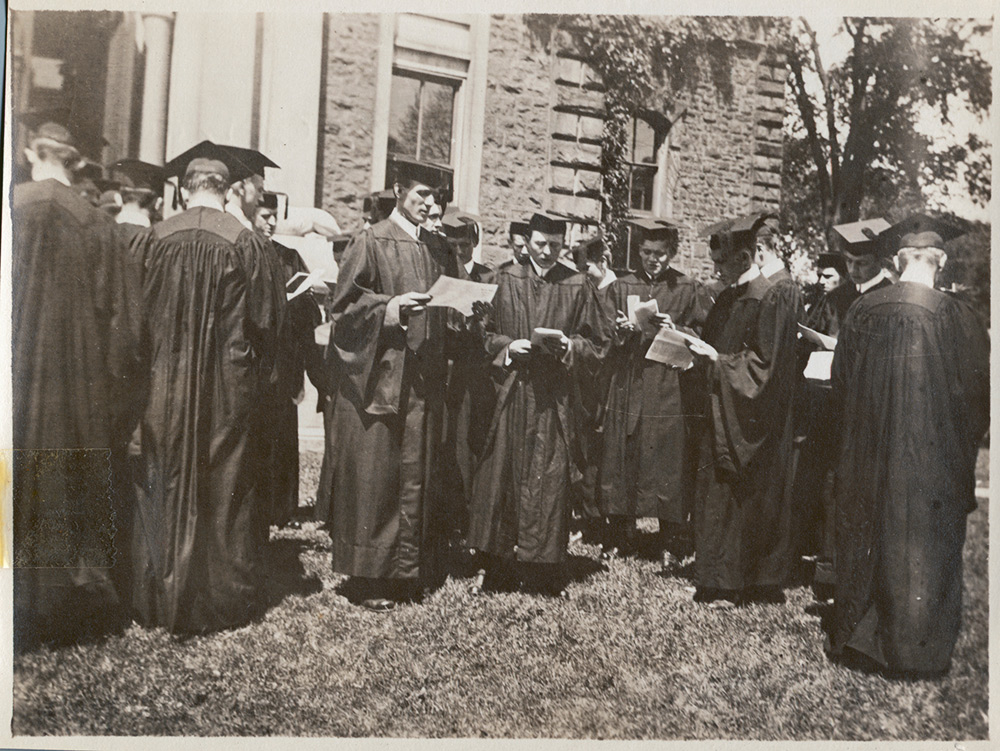
Who carries the mace?
Do you know what a mace is, and what’s engraved on ours? The tradition started in 1935 and involves the University marshall’s carrying an ornamented staff up the commencement aisle to the podium. Based on a medieval instrument and strictly ceremonial, the rod gives “grandeur to the event,” says Mead. Made of mahogany with hand-made silver embellishments, the University’s mace has the names of everyone engraved on it who has served as its president. It was designed by Phillip Merz who worked for the local architectural firm of Gordon and Kaelber, which existed until the early 1930s. Merz was also responsible for other aesthetic designs on campus, such as the owls and dandelions, as well as the University’s official seal, which was revised in 1928 to include the schools of music and medicine, Mead says.
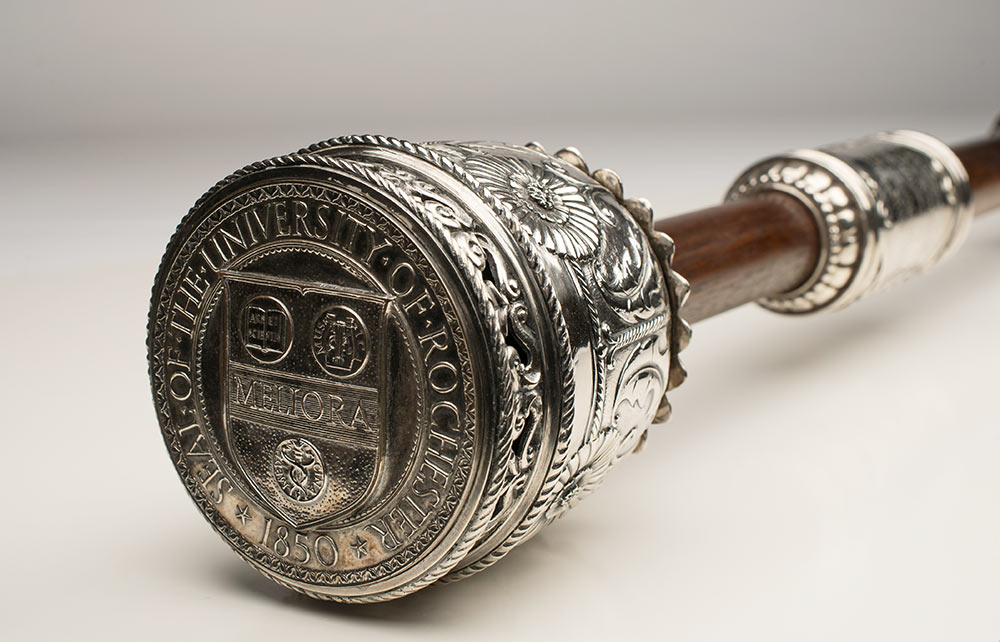
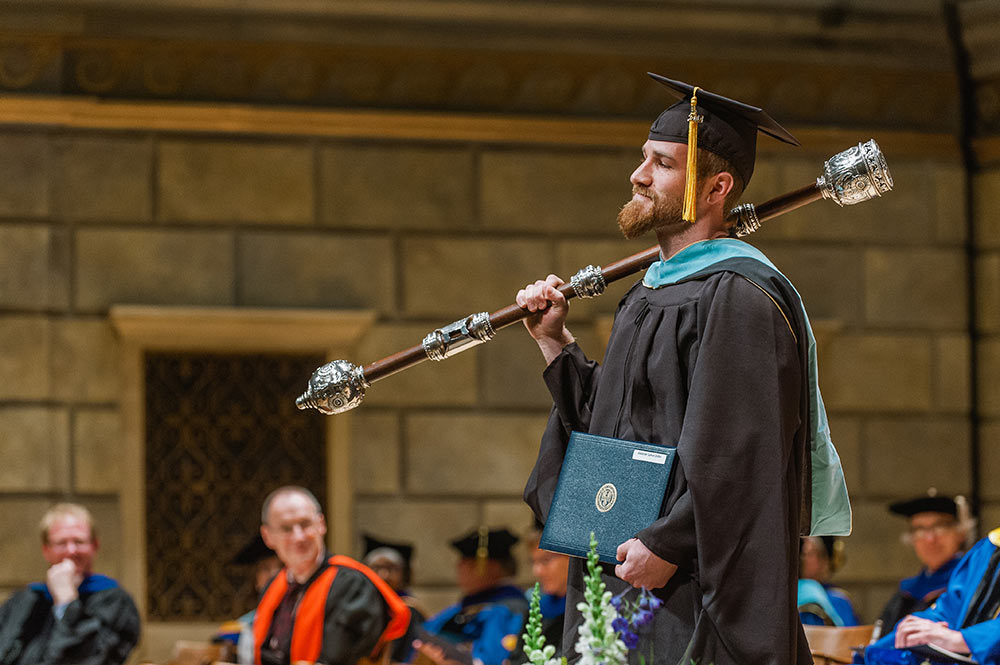
O Mater Academica—oh, never mind
Today, as the graduation ceremony concludes, the crowd sings The Genesee, composed by Thomas T. Swinburne of the Class of 1892. The Genesee became the official alma mater in the early 1970s.But before that, beginning in 1907, O Mater Academica was the official commencement hymn. Sung in Latin, it was composed by the late English professor John Rothwell Slater. O Mater Academica was retired when fewer and fewer people could recall the Latin lyrics.
Speaking of recall—if your brain is fried from all the studying—here’s a quick cheat on the way to the ceremony: just snap a photo of the bronze plaque at the end of the Quad near the Chapel. It has the lyrics to the Genesee cast on it.
